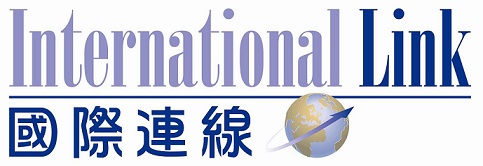奧地利 文化底蘊深厚 經濟蓬勃興旺
奧地利 文化底蘊深厚 經濟蓬勃興旺
Austria - Rich Culture with a dynamic and innovative economy
Austria – a country at the heart of Europe – is known for her rich cultural past and present, for its beautiful landscape as well as a dynamic and innovative economy. Austria the fourth richest country in Europe and among the most productive nations in the world. Its quality of life is unsurpassed in the world. Vienna, Austria is the world’s most popular business destination for managers.
What makes Austria unique is its social stability brought by a stable political system and a well-developed system of co-operation between the major economic interest groups both among each other and the government. Such co-operation was essential for the reconstruction of Austria after the Second World War and created the basis for further economic growth and social stability.
Austrian has one of the highest growth rates, one of the lowest unemployment rates and the lowest youth unemployment rate in Europe.
The country boasts of an excellent infrastructure, highly qualified employees, a strong economic base by innovative small and medium enterprises and a great location at the crossroads between Eastern and Western Europe.
Austria is proud of its hidden champions that are worldwide pioneers in cutting-edge technology and innovation. Austria (along with Germany and Switzerland) shows the highest concentration globally of small and medium-sized enterprises that have a global market leader position in their respective industries. Austria is particularly strong in high end technology and manufacturing, high end precision equipment, environmental technology, in particular as regards renewable energy and water.
Ingenious Austria
Did you know that? 30% of the world’s rail tracks are from Austrian company Plasser & Theurer?
Austria holds 50% of the US energy drinks market?
7 billion eggs each year are delivered in 100% recyclable packaging made in Austria
Your mobile phone probably runs on technology made in Austria? The Austrian company AT&S is one of the world’s leading manufacturers of high-end printed circuit boards for smartphones, tablets, digital cameras, portable music players, as well as for the automotive industry.
When you landed safely at the airport, it was probably because of the air to ground communication technology developed by the Austrian company Frequentis, the global market leader in voice communication systems for air traffic control
Schoeller-Bleckmann Oilfield Equipment is the global market leader for high-precision components for the oil service industry
BWT is Europe's leading water technology company
The Isovolta Group is the global market and technology leader in the development and production of solar backsheets, a key component required in photovoltaic modules.
The stamps in your passport probably have probably been made from an Austrian company? The Trodat Inc. is the world's market leader in self-inking stamps and dominating engraving, marking, and cutting in the laser area with Trotec
The success of these hidden champions derives from some distinctive factors such as a strong focus on production and manufacturing, outstanding in-house innovation and research, a highly skilled labor force thanks in Austria’s case to the dual system of apprenticeship and vocational education, a strong export oriented approach, and a high vertical integration of manufacture.
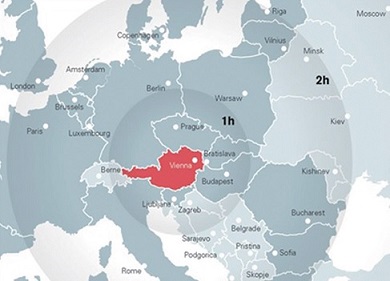 Area: 83,872 km² Area: 83,872 km²Population: 8.4 mio. GDP growth: 0.4% (2013) Unemployment rate: 4.9% (lowest in EU) R&D quota: 2.81% of GDP |
VIENNA – most liveable city in the world
Top location for international organisations
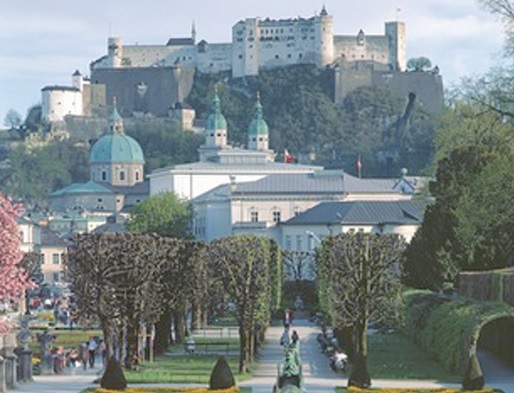
View of the fortress of Salzburg, Mozart’s birthplace
The fall of the iron curtain and the enlargement of the European Union to the east have put Vienna into the centre of Europe not only from a geographical but in particular also from a political and economic point of view. The Austrian capital has established a particularly strong reputation as a business hub between east and west, it is the ideal location to set up business contacts with Eastern and South-Eastern Europe: Over 300 international corporations have chosen the Vienna Region as the headquarters of their Eastern European operations – and around 200 of them are directly located in Vienna. The annual number of new businesses in Vienna has more than doubled in the past years.
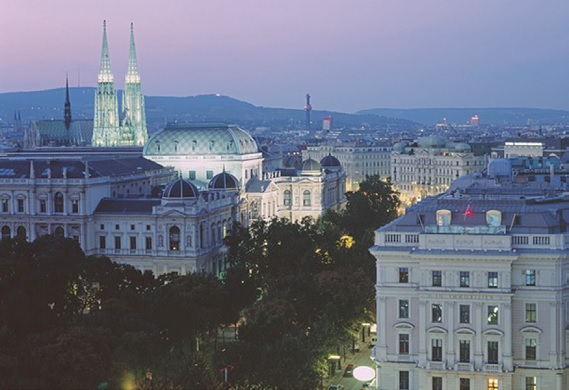
View of Vienna from Burgtheater
For more than 30 years, Vienna has been one of the four official UN headquarter cities. The Austrian capital also serves as the seat of other important multinational and international organisations, such as the Organisation of the Petroleum Exporting Countries (OPEC), the Organisation for Security and Cooperation in Europe (OSCE), the International Atomic Energy Agency (IAEA) and the United Nations Industrial Development Organization (UNIDO). With over 3,500 diplomats and more than 5,000 staff working for international organisations, Vienna is one of the most important diplomatic hubs in the world.
Vienna has been ranked, sixth year in a row, as the world’s most liveable city, according to Mercer’s Quality of Living study 2014. It puts the quality of live of its citizens centre stage and has thus obtained a whole raft of accolades for its achievements in terms of productivity, infrastructure development, quality of life, social equality and environmental sustainability.
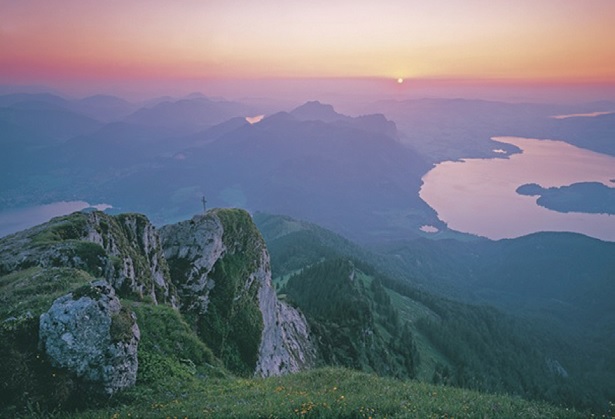
View from the Schafberg to Lake Mondsee / Upper Austria
Vienna and wine are inextricably linked.
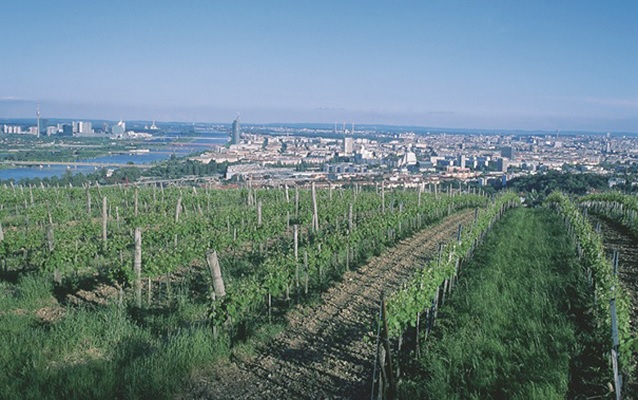
Vineyards in Vienna View of the City
By the way, did you know that Vienna is the only metropolis in the world to cultivate an appreciable wine-growing industry within its city limits ?
And Vienna’s heurigers – the homely taverns serving fine wine and buffet food – are legendary. Some of the heurigers and vintners run tours, allowing a first-hand glance at vineyards and wine cellars.
And Vienna’s heurigers – the homely taverns serving fine wine and buffet food – are legendary. Some of the heurigers and vintners run tours, allowing a first-hand glance at vineyards and wine cellars.
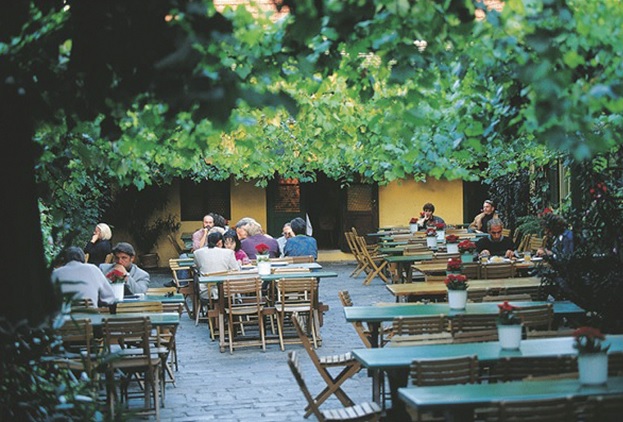
Wine tavern courtyard in Vienna / Grinzing
Popular travel destination and leading conference venue
Vienna counts among Europe’s most popular destinations for city tourism. 2013 again proved a record-breaking year for the Vienna tourist industry, with 12.7 million overnight stays (plus 3.7 per cent) and 5.8 million guest arrivals (plus 4.1 per cent). The success story is partly due to the city’s unique wealth of cultural attractions and epicurean highlights, but also due to the excellent shopping opportunities the Austrian capital offers. In November 2013, Vienna was even ranked eight place in the CNN list of "The world's 12 best shopping cities".
Vienna has also established a clear lead in the field of conference tourism. 195 international conferences are held in Vienna each year, making it the most popular congress location worldwide. (Source: 2012 statistics of the International Congress and Convention Association, ICCA)
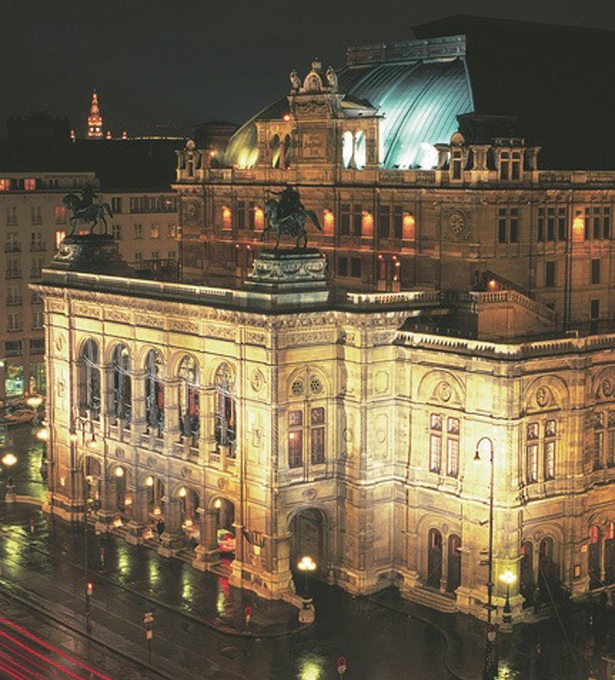
Vienna State Opera at night
Cultural life and events spur economic growth
Vienna has about 70,000 theatre and concert seats. In addition to the regular seasonal programmes in Vienna's concert halls, there are approximately 2,500 major events every year, i.e. about seven large events per day. Vienna is also renowned for its unique ball tradition, with some 450 balls per year attracting about 300,000 guests in total. A particularly flamboyant example, the Vienna Life Ball, has even become Europe's largest AIDS charity event.
(Source: Austrian Tourism Board)
Did you know that Vienna has been ranked:
- the most liveable citie worldwide according to Mercer’s Quality of Living study 2014
- the most prosperous city among 70 metropolises of the world according to the World Urban Forum edition of the "State Of The World’s Cities Report 2012/2013"
- one of the smartest cities worldwide, as rankings by the US American climate strategist Boyd Cohen show.
- among the top ranking cities worldwide when it comes to online communication with its citizens
- the most innovative city in Europe and ranks third worldwide according to the Innovation Cities Global Index published annually by the Australian innovation agency 2thinknow
- first among the 25 "Best Cities For Young People To Live In" according to the US-American internet ranking platform "list25.com"
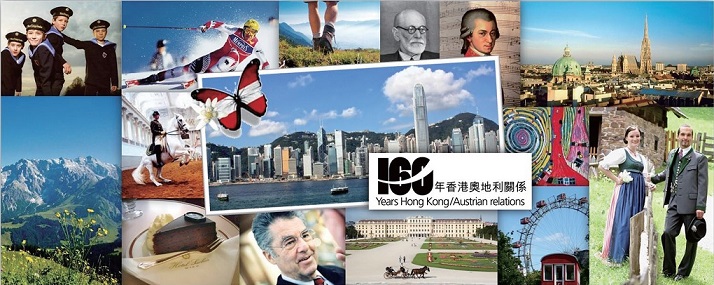
160 Years Jubilee of relations between Hong Kong and Austria!
This year, we proudly celebrate 160 years of consular presence of Austria in Hong Kong when the first imperial and royal honorary consular office was established in 1854 by Emperor Franz Josef. In addition, we commemorate 50 years since the honorary Consulate General had been upgraded to a fully-fledged Consulate General’s position for career diplomats. The exports back then amounted to US$14.4 million. 50 years later we stand at US$790 million!
Ever since, relations between Austria and Hong Kong have deepened and broadened. People-to-people contacts are flourishing. In addition, Hong Kong is one of the most attractive Asian destinations for Austrian travellers; approximately 26,000 Austrian tourists per year visit the city. Hong Kong with the Pearl River Delta is the number one hub for Austria’s foreign trade industries. Some 210 companies are located in the region and around 700 Austrians live and work in Hong Kong– the largest Austrian expatriate community in Asia! Through the Austrian Chamber of Commerce or Austrocham, Austrians participate actively in the economic and social life of the so-called Fragrant Harbour. Outstanding personalities such as Dr. Helmut Sohmen, Anthony Hardy, or Henry Steiner testify to the exceptional qualities that Austrians bring to the city and contribute to its prosperity and high standard of living.

the Peak tram and the Ocean Park Express
Austrian Footprints in Hong Kong- surprisingly ingenious!
Little is known of Austrian influence in Hong Kong, despite its long history of business investment with Hong Kong. Around HKD five billion of Austrian exports are shipped directly to Hong Kong.
Austrians are blending in Hong Kong society as easily as they have always done deriving their roots from a culture that boasts of a rich multicultural history. It is said that Austria, and in particular its capital Vienna has served a bridge between the East and the West. This has been particularly true during the times of the Austrian multinational empire that spanned half of Europe, from the west bordering Switzerland to the East to the Black Sea and bordering Russia, to the south it held parts of Italy. It is also true for the Austrian Republic when Vienna became the top-notch venue for East-West Diplomacy in the Cold War.
This might explain a bit why Austrians tend to be rather invisible. The rising influx of Austrian companies to Hong Kong – the number has doubled in the last 5 years – is resulting in a steadily widening Austrian community in the city. As well as the commercial benefits this brings to both countries, cultural and education exchanges are also at an all-time high. Austrian CEOs recognise that the welcoming business atmosphere of Hong Kong and rule of law make the city the ideal place to base their Asian operations.
But Austrians and Austrian companies have contributed with innovative solutions to Hong Kong’s greatest challenges and needs. Austria is particularly strong in urban innovation and green technology. Austrian technology is already to be found in Hong Kong’s key environment projects, such as the new thermal sewege sludge treatment plant in Deep Bay provided by the Austrian company Andritz Energy & Environment, Hong Kong or the world largest Multi-Feedstock Bio Diesel Plant in Hong Kong built by the Austrian company BDI..
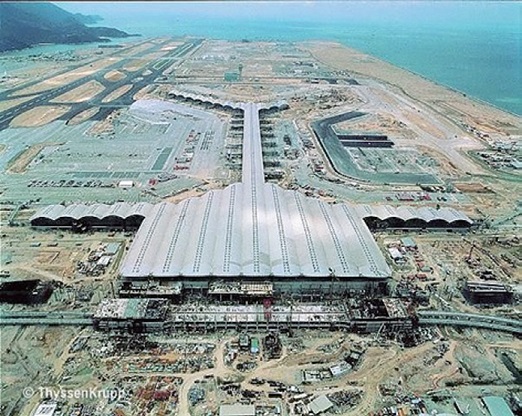
Roof Structure, Hong Kong Airport
Austrian footprints in the city are remarkable and have contributed to the shape of the city as we know it.
If you have a closer look at a landmark building in Hong Kong, the Hong Kong International Airport , in particular its roof structure, you’ll find that it was the Austrian company Hoesch Bausysteme of Scheifling in Styria who built the 20,000 sqm arched roof and applied the 15,000 sqm trapezoidal profile to support the whole structure. Talking about the airport:
Did you for instance know that the air traffic control network in Hong Kong and China runs on Austrian technology ? The entire air-2-ground communication in Hong Kong is provided by the Viennese company Frequentis.
Hong Kong would not be the same without the Peak tram and the Ocean Park Express. The funicular for both was designed by the Austrian company Messrs. Doppelmayr.
Austrian cutting-edge technology can also be found in one of the largest bridges in Hong Kong. The impressive structure of Tsing Ma Bridge, the world's seventh-longest span suspension bridge, was engineered by the Austrian company Waagner Biró. Approximately 49,000 tonnes of structural steel - provided by the Austrian company VA Stahl - were used in the construction of the bridge, which cost HKD 7.14 billion to build. At the time only the Austrian company Waagner Biró was able to guarantee stability on the lower level containing two rail tracks and two sheltered carriageways, used for maintenance access and traffic lanes when particularly severe typhoons strike Hong Kong and the bridge deck is closed to traffic.
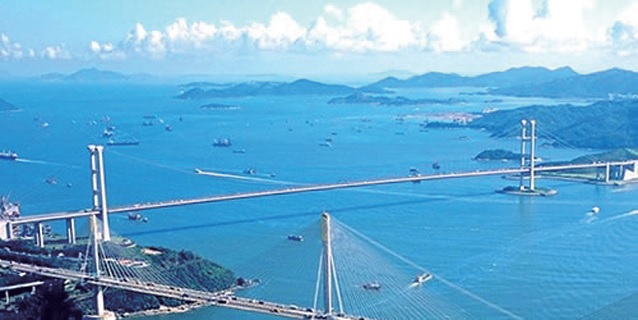
Tsing Ma Bridge (Source: Discover Hong Kong )
Want to know more?
Join on
www.bmeia.gv.at/hongkong
facebook/Austrian Consulate General Hong Kong
https://www.facebook.com/visitaustria
(Source: The Austrian Consulate General)
